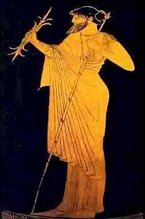Ancient Coin Terms
Alloy: Mixture of metals.
AE: Bronze coin.
AR: Silver coin.
AU: Gold Coin.
Alloy: Mixture of metals.
AE: Bronze coin.
AR: Silver coin.
AU: Gold Coin.
Biga: Chariot pulled by two horses
Billon: Low Grade silver.
Commemorative: Special coin issued to commemorate a person, place or event.
Cuirassed: Bust on coin is depicted wearing armor.
Diademed: Ribbon or pearls in hair.
Draped: Cloak on shoulder(s) of bust.
Denarius: Silver Roman coin.
Exergue: Area at bottom of coin on reverse.
Field: Area in and around the positive elements on obverse and reverse.
Flan: Metal blank. The dies are used to strike the flan.
Grade: Rating of the quality of a coin.
Incuse: Recessed design in the surface of the coin.
Laureate: Bust of coin is depicted wearing laurel wreath.
Legend: Inscription on coin. Can be found on reverse and or obverse.
Some coins do not have a legend.
Mint Mark: Some kind of “mark” used as a symbol to indicate where the
Coin was minted.
Mule: The obverse and reverse of the coin are incorrectly combined.
Nimbus: Halo
Billon: Low Grade silver.
Commemorative: Special coin issued to commemorate a person, place or event.
Cuirassed: Bust on coin is depicted wearing armor.
Diademed: Ribbon or pearls in hair.
Draped: Cloak on shoulder(s) of bust.
Denarius: Silver Roman coin.
Exergue: Area at bottom of coin on reverse.
Field: Area in and around the positive elements on obverse and reverse.
Flan: Metal blank. The dies are used to strike the flan.
Grade: Rating of the quality of a coin.
Incuse: Recessed design in the surface of the coin.
Laureate: Bust of coin is depicted wearing laurel wreath.
Legend: Inscription on coin. Can be found on reverse and or obverse.
Some coins do not have a legend.
Mint Mark: Some kind of “mark” used as a symbol to indicate where the
Coin was minted.
Mule: The obverse and reverse of the coin are incorrectly combined.
Nimbus: Halo
Potin: Bronze with a high percentage of tin and lead.
Quadriga: Chariot drawn by four animals. Typically horses.
Radiate: A spiked crown on head of bust.
SC: When found on coin, indicates senate approval of coin’s issue.
Abbreviation for Senatus Consulto.
Sestertius: Largest coin of the Roman Imperial Period.
Solidus: Gold coin from the period of Constantine I.
Standard: Pole upon which a “flag” is fixed.
Tone: The degree of lightness and darkness of a coin.
Trachy: A concave coin.
Quadriga: Chariot drawn by four animals. Typically horses.
Radiate: A spiked crown on head of bust.
SC: When found on coin, indicates senate approval of coin’s issue.
Abbreviation for Senatus Consulto.
Sestertius: Largest coin of the Roman Imperial Period.
Solidus: Gold coin from the period of Constantine I.
Standard: Pole upon which a “flag” is fixed.
Tone: The degree of lightness and darkness of a coin.
Trachy: A concave coin.
Triga: Three horses abreast.
Tripod: Three legged stand.
Tripod: Three legged stand.

No comments:
Post a Comment